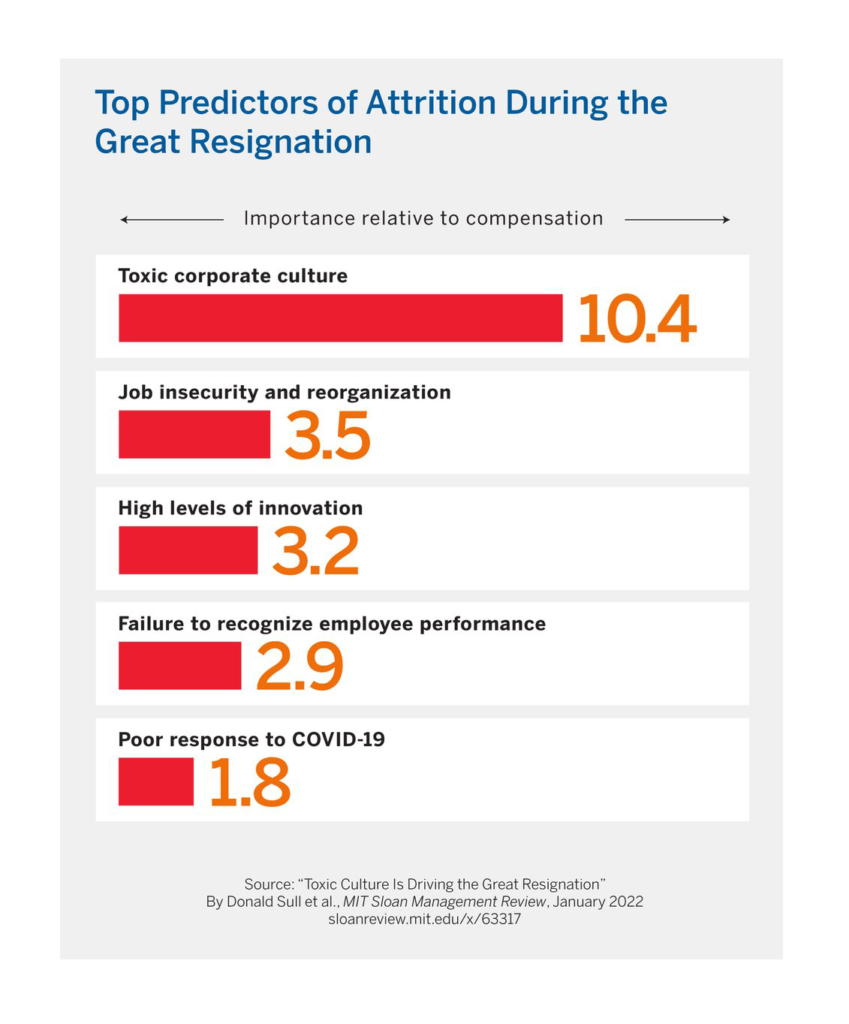Why is company culture important? For an answer, look no further than Peter Drucker’s famous quote, “Culture eats strategy for breakfast.” As Drucker implies, even the most elegant strategy will fail unless the organisation is culturally aligned and ready to carry the strategy forward in both letter and spirit.
“Culture is the heartbeat of an organisation,” says Jo Long, a business culture and team engagement specialist with CultureStretch. “It’s the thing that drives momentum, and when things get tough, culture is the glue that holds people accountable, that helps them through.”
However, thinking about the culture in one’s organisation as something that forms naturally is a mistake. Culture is ultimately shaped by the behaviours the organisation rewards, as well as those it penalizes. Determining which behaviours the organisation wants to cultivate (or, for that matter, diminish) is leadership’s domain.
“When referring to culture, it is important to underline that it constitutes an amalgam of company values and behaviours that frame how “the job is done” in each organization,” says Elena Maniatopoulou Hadjipanayi of the human resources consultancy Forward Mindsets. “Companies need to proactively manage culture by creating stepping stones such as meaningful work and sense of purpose.”
Culture shaping can also take the form of curbing certain behaviours and guarding against making exceptions for high performers. Employees who run afoul of ethics guidelines or are toxic presences will beget more of the same if the organisation fails to successfully address the behaviours in question – irrespective of the employee’s performance.
“You don’t change culture but rather you shift the behaviours of individuals within the culture,” notes Julia Felton of Business HorsePower.
The link between behaviour and the resulting culture is a bright line. The behaviours an organisation accepts effectively set the bar on the mores and norms within the organisation.
“Culture can drive different behaviours in people,” notes Jane Baalam of RewardRisk Management. For example, a culture of “the boss is always right” will result in staff not pointing out when something is going badly wrong and could result in disengaged employees.
“Culture is how you do things as a company,” says Andrea Herran of Focus HR Consulting. “Great culture attracts great people and great clients”.
Company culture is the cornerstone of employee retention
An organisation’s culture plays a central role in employee retention. Those that overlook or ignore toxicity, unfair or retaliatory treatment or other unethical behaviour are in effect rewarding those behaviours by allowing them to persist, creating a negative work experience for the employees involved.
According to the recent MIT SMR/Glassdoor Culture 500 study, “A toxic corporate culture is by far the strongest predictor of industry-adjusted attrition and is 10 times more important than compensation in predicting turnover.” The leading elements of toxic cultures, the researchers found, include failure to promote diversity, equity, and inclusion; workers feeling disrespected; and unethical behaviour.
That toxic cultures lead to increased employee turnover is not a secret. However, the effect of toxic workplaces extends beyond the workers who bear the brunt. Employees notice when others are treated poorly and subsequently leave their jobs.
“When workers weigh whether to jump jobs, they don’t just assess their own pay, benefits, and career development. They look around and take note of how friends feel about the team culture,” writes Emma Goldberg for the New York Times article, “You Quit, I Quit, We All Quit. And It’s Not a Coincidence.” “When one employee leaves, the departure signals to others that it might be time to take stock of their options, what researchers call “turnover contagion.”
Signs of a toxic workplace culture
The signs of a toxic workplace are generally easy to recognise. Two of the most obvious are a rising turnover rate, and increasing levels of employee disengagement, itself a precursor to employee departures. However, other signs of a toxic workplace culture include:
- A tendency to make excuses or accept bad behaviour from high performers
- A lack of candour and reluctance on the part of employees to speak up
- A lack of communication, except for gossip
- Employees are unable to maintain a healthy work/life balance.
If you have a hunch that problems are brewing within the organisation, an anonymous survey can be tremendously helpful in understanding what issues are present, and in which departments or teams they are most prevalent. Here’s a list of questions you can ask to help diagnose issues within your organisation. (We recommend providing multiple choices, e.e. “strongly agree” “somewhat agree” “neither agree nor disagree” “somewhat disagree” “completely disagree”.)
- I feel positive and enthusiastic about my job.
- My relationships with my coworkers are strong.
- I am been able to maintain a good work/life balance.
- I feel that I’m able to make good progress at work.
- I’m good at bouncing back after a difficult time.
- My manager cares about my wellbeing.
- My manager supports me in my work, providing clear direction and priorities.
- People in my department are treated fairly.
- The organisation treats employees with respect.
However you go about assessing the health of your team culture, be sure to look for patterns and outliers. Collecting insight via open-ended questions such as “How would you describe our company’s culture?” and “What recommendations do you have for improving our team culture?” can help you gain more insight into the health of your organisation’s culture, how individual employees perceive it, and, crucially, which aspects of the culture need to be strengthened or changed.
Building a great culture in your workplace
Getting a culture on the right track is straightforward, and it starts with leadership alignment on cultural objectives and the behaviours the workplace will accept. Importantly, leaders must also model the behaviours they wish to inculcate. Nothing will since a workplace culture faster than a “Do as I say, not as I do” posture from leadership.
However, while cultural change starts from the top, it requires effort throughout the organisation. Leaders should ensure they are clear and consistent with communications, and they should enlist help from employees throughout the organisation.
“Success depends on the organization’s ability to shift its employees’ mindsets, introduce new behavioural expectations, and implement cultural change,” notes an excellent article on the role of culture from the Jabian Journal. “The purpose of a transformation is to operate differently.”
To effect lasting cultural change, the Jabian Journal article noted above suggests leaders give employees the big picture, sharing with them the reasons for cultural change, and the organisation’s new behavioural expectations. Then, once you’ve told the team what’s happening, the next step is to show them with these four steps:
- Provide examples of how you want employees to behave under specific circumstances.
- Align those behaviours to the desired culture and the outcomes of the transformation.
- Recognize and reward employees for shifting their mindset.
- Repeat.
“Cultivating a great company culture is important not only for employee engagement, happiness, and retention but also, plotting the blueprints for a thriving business; regardless of the economic climate,” notes an article from BreatheHR. “Company culture encourages CEOs, HR consultants and company leaders to ask the right questions that lead to honest evaluation and pushes for change. After all, it is only when we identify and establish what could be changed that we can then set about resolving issues and conflicts to progress and grow above our own limitations and, indeed, business competitors.”
Ultimately, the health of the organisation’s culture is up to its leaders. “You can create a culture that is toxic, smoggy, ambiguous and unsettling, or you can create a culture of light, airiness, acceptance and clarity,” says Debbie Ince of Executive Talent Finders. “Creating your authentic company culture is the cornerstone to the longevity of your business and an engaged, happy workforce.”



